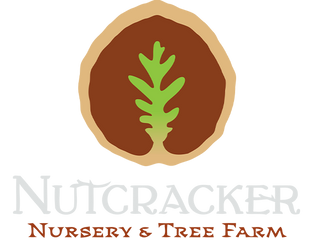NORTHBLUE blueberry
Shipping calculated at checkout
49 in stock
Need more? Contact us
General information & origin
- ‘Northblue’ is a half-high variety (hybrid between highbush and lowbush), combining the vigor of highbush and the hardiness of lowbush.
- It was introduced in 1983 (University of Minnesota).
Main characteristics
- Hardiness zones
- Zones 3 to 7. Resistant to cold winters; can withstand temperatures as low as approximately -35°F (≈ -37°C) in good conditions.
- Zones 3 to 7. Resistant to cold winters; can withstand temperatures as low as approximately -35°F (≈ -37°C) in good conditions.
- Size & habit
- Compact shrub (“half-high”), approximately 60-90 cm tall (≈ 2-3 ft) and 80-100 cm wide, depending on the source.
- Compact shrub (“half-high”), approximately 60-90 cm tall (≈ 2-3 ft) and 80-100 cm wide, depending on the source.
- Foliage & appearance
- Shiny leaves, green in summer, turning beautiful shades of orange-red to dark red in fall. Spring flowering with white (sometimes slightly pink) bell-shaped flowers.
- Shiny leaves, green in summer, turning beautiful shades of orange-red to dark red in fall. Spring flowering with white (sometimes slightly pink) bell-shaped flowers.
- Fruit
- Medium to large, dark blue, firm berries with a good flavor—often described as “wild blueberry taste.” Cooked or fresh, they hold up reasonably well.
- Medium to large, dark blue, firm berries with a good flavor—often described as “wild blueberry taste.” Cooked or fresh, they hold up reasonably well.
- Harvest time
- Mid-season (midsummer)—July to early August depending on climate.
- Mid-season (midsummer)—July to early August depending on climate.
- Yield
- Varies depending on conditions, but generally good: several sources mention ≈ 3-7 lb (≈1.4-3 kg) per bush in good conditions.
Strengths & advantages
- Highly hardy → Ideal for regions with harsh winters.
- Compact plant → Practical for small gardens, pots, vegetable gardens, borders.
- Good taste & firmness → For fresh consumption, cooking, freezing.
- Aesthetic appeal → Beautiful flowering, striking fall colors, attractive landscaping.
Constraints & things to watch out for
- Even though the variety is self-fertile (or “self-fruitful”), yields are better if another compatible variety (another half-high) is planted nearby. Cross-pollination helps fruit size and quantity.
- Requires well-drained, acidic soil (ideal pH ≈ 4.5-5.5) rich in organic matter. Soil that is too alkaline or compact causes problems (chlorosis, low yields).
- Requires sufficient light → full sun or light partial shade for good yields and beautiful fruit color.
- Limited productivity in the first few years, as with many blueberry bushes: the shrub must establish itself.
Recommended growing measures
Here are some tips to maximize your success with ‘Northblue’:
- Location: Choose a spot with full sun or at least 6 hours of direct sunlight per day.
- Soil: Add well-decomposed compost and organic mulch (bark, leaves, etc.) to maintain moisture and acidity. Test the soil to ensure the pH is between ~4.5-5.5.
- Spacing: Space plants ~90-100 cm apart so that each shrub has room to grow. If smaller, space them closer together.
- Maintenance: Prune old wood (3-4 years and older) to encourage new growth. Remove dead/diseased wood.
- Winter protection: Although hardy, good mulching around the base helps, especially if the soil is sandy or exposed to wind.
- Pollination: It is a good idea to plant another compatible half-high or highbush variety if possible (e.g., ‘Northcountry’, ‘Polaris’) to improve yield and fruit size.
Hardiness Zones
Flowering period
Light
Uses / Special remarks



